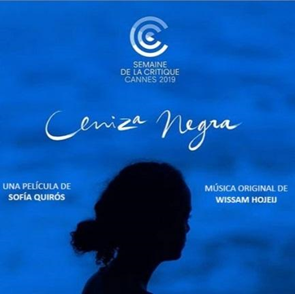Costa Rica: A Paradise for Cinema?

When you hear the word “Costa Rica” you immediately think beach, nature,coffee, right? However, this small country also conceals secrets that deserve to be known! One of them is its cinema, a growing sector that is transforming the country into a small haven where more and more films are being produced.
Some history

It was in the 2000’s that the boom of cinema in Costa Rica took place. With the arrival of private investment, the country saw the birth of a beautiful generation of filmmakers such as Esteban Ramírez (Gestation, 2009, Presos, 2015), Hernán Jiménez (The Return, 2012), Paz Fabrega (Clod Water of the Sea, 2011), Laura Astorga (Red Princesses, 2013), Neto Villalobos (All About the Feathers, 2013) or Miguel Gómez (The Red Sky, 2008).
Before this date, few films stand out. They were produced independently, mainly through individual efforts with little help from the State. We can mention Eulalia, (1987) by Oscar Castillo and La Segua (1985) by Antonio Yglesias.
In the 90’s, with the advent of video, many short films were made, allowing young video artists to open the doors of cinema: Once Rosas (2000) by Esteban Ramirez, La Pasión de Nuestra Señora(1998) by Hilda Hidalgo, Florencia de los ríos hondos y tiburones grandes by Yshtar Yasin.
“It should be noted that Costa Rica is one of the countries in the area (if not the only one) where there are more than 20 institutions and schools that teach audiovisual professions, which is enormous for a country of only 5,000,000 inhabitants.”

Numbers explode
The biggest audience success was “Maikol Yordan de viaje perdido”[1], directed by Miguel Gómez, with the accomplished comedians of the group “La media docena”(a sketch comedy troupe). This comedy, which recounts the adventures of a farmer in the big European cities, was watched by 750,000 people in Costa Rica, almost 15% of the country’s population of 5 million. An interesting detail: the film cost only 200.000 dollars and brought in more than 2.000.000 dollars to its producers!
Currently, making a film in Costa Rica costs around 500,000 dollars or less. This is a great advantage for production companies from developed countries where costs are much higher.
International recognition arrives thanks to women

Land of Ashes (2019) directed by Sofía Quirós was the first Costa Rican feature film in history to be selected in the “Critics’ Week” section at the 2019 Cannes Film Festival. The previous year, Valentina Maurel, won the first prize of the Cinefondation in Cannes with her short film Paul is here. She did it again in 2019 by being selected in the Critics’ Week section with her short Lucia en el Limbo.
As for Antonella Sudasassi, she was selected for the Goya with El despertar de la hormigas.
Women who have things to say
Curiously, most of the filmmakers who have things to say are women[2]. And they are the ones who make films with a message. Alexandra Latishev talks about abortion in Medea, Laura Astorga talks about immigration in Red Princesses and ecological crimes in Infierno Verde. Patricia Velásquez talks about identity in Apego. It seems that cinema is the artistic discipline that has given them more space to speak.
New challenges

Even if we have gone from 2 films produced per year in the 90s to 20 films per year in 2018, Costa Rican cinema still struggles to become a real industry. Lack of investment from the State, lack of knowledge of the economic benefits of the sector, mistrust of companies, lack of infrastructure and a legal skeleton, lack of organization of the sector’s actors are all obstacles that filmmakers and young creators must face. [3]
Besides this, the Cinema[4] law, on the desk of the Assembly members for years without being voted on, is the target of long debates every year and is currently abandoned. Its long-awaited approval would provide the sector with the springboard it so desperately needs, but this seems to be in jeopardy.
Nevertheless, there is a glimmer of hope on the horizon: a new law for the Attraction of Film Investments has just been proposed to the Assembly in order to allow international productions not to pay the IVA (sales tax)[5]. This measure, although not yet sufficient, will attract more “services” (foreign productions) to the country, which is in competition with other countries that offer much more financial advantages than Costa Rica (the Dominican Republic and Colombia offer a very interesting “tax rebate”).
In the same sense, the creation of the Costa Rican[6] Film Commission, marks the will to make Costa Rican films real export products. This entity belonging to Procomer (Promotora de Comercio Exterior) is responsible for promoting Costa Rican productions internationally and since its creation three years ago, it has helped place Costa Rica on the map of world cinema.
It should be noted that Costa Rica is one of the countries in the area (if not the only one) where there are more than 20 institutions and schools that teach audiovisual professions, which is enormous for a country of only 5,000,000 inhabitants.
“Ceniza Negra, directed by Sofía Quirós was the first Costa Rican feature film in history to be selected in the Critics’ Week section at the 2019 Cannes Film Festival.”
In short, the country is far from being the Hollywood of Central America, and yet it is a country in full expansion where local and international films are increasingly being made, thanks to the many advantages that the country offers: political stability, exuberant nature, natural and urban settings, a high level of hospitality services, high quality professionals and eco-labeled filming. All this, in addition to the recent international success of local productions, makes Costa Rica the next small country to shoot films.
TO REMEMBER
- Costa Rica is a country in full development in the field of audiovisual production: more than 20 institutions teach the cinema professions and the number of films produced per year is currently 15-20 projects for a country of only 5,000,000 inhabitants.
- Women filmmakers have placed the country in the great leagues of international cinema: Sofía Quirós with Land of Ashes (2019), Antonella Sudasassi with The Awakening of the Ants (2019) and Valentina Maurel with Paul is here (2017) and Lucía in Limbo (2019).
- The Film Project Attraction Act is on the table in the Assembly and will allow foreign production companies to avoid paying sales tax (IVA).
Author: Marian Li
Actress and Producer
www.marianli.com @marian_li_actress
[1] https://es.wikipedia.org/wiki/Maikol_Yordan_de_viaje_perdido
[2] https://www.larepublica.net/noticia/mujeres-que-hacen-historia-en-el-cine-nacional
[3] https://www.primeraplana.or.cr/es/Curadur%C3%ADa/Presupuestos_elevados_dificultan_la_produccion_de_cine_en_Costa_Rica/
[4] https://www.centrodecine.go.cr/2019/11/07/articulo/proyecto-ley-cinematografia-audiovisual-n20661
[5] https://delefoco.com/diputados-presentan-proyecto-de-atraccion-de-inversiones-filmicas-en-costa-rica/
[6] https://costaricafilmcommission.org/
Navigate articles






